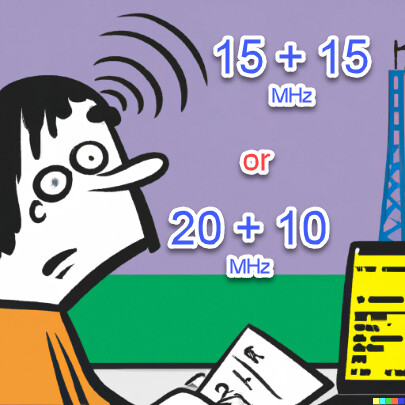Hello Everyone.
Can anyone advise what is better in terms of coverage and capacity?
Enabling LTE 1800 2 bands of 20 + 10 MHz or 15 + 15 MHz?

Hello Everyone.
Can anyone advise what is better in terms of coverage and capacity?
Enabling LTE 1800 2 bands of 20 + 10 MHz or 15 + 15 MHz?

Load balance will be easier if 15+15.
I would go for 2 * 15MHz - overall signalling overhead should be less… need calculation.
Sir, I think you should take a call based on capacity and CA point of view also.
One important thing, be careful of the combination you’re willing to use.
Some RRUs (because of commercial handsets) don’t support certain combinations of carrier / bandwidth in Carrier Aggregation, better check with the vendor’s solution team.
Can you explain why 20+10 will provide more capacity than 15+15?
Coverage in LTE and NR is influenced by frequency bands, with lower frequencies providing more extensive coverage due to superior propagation and medium penetration characteristics. Capacity is tied to the number of Physical Resource Blocks (PRBs), both combinations have the same PRB count (150 PRBs).
However, factors such as frequency allocation from regulatory authority, equipment specs and clutter determine the final combination if there’s sufficient bandwidth on lower and higher frequencies.
This answer is not relevant to this case, both configurations are within same frequency band, presumably even adjacent in frequency spectrum. They will experience nearly identical large scale propagation characteristics, rendering any advantage in coverage zero.
I agree with above to check overhead calculator, there might be a small difference.
Coverage should be same, I am assuming you would maintain the same RS power.
CA combinations and number of UEs supporting this combination in your network might be the largest capacity bottle neck.
True, had missed the part there are in same frequency band.
The choice between these configurations depends on the specific goals of the network deployment. If the focus is to provide extensive coverage with reasonable capacity, the 20 + 10 MHz option might be preferable. As per my understanding the more balanced and desired approach is 15 + 15 MHz configuration could be suitable. However, the decision would be influenced by factors such as population density, expected user demand, and the network operator’s overall strategy. Hope you understand. Thanks
but why would 20+10 give more capacity?
Can you explain why 20+10 will provide more capacity than 15+15?
How do I do this calculation?